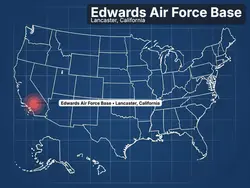Financial Readiness and the Fight Against Food Insecurity

Readiness has many facets, but one of the most basic elements is having active-duty troops and their families well-nourished with healthy food. Unfortunately, more than one in four – 27.7% – of active-duty military families experience food insecurity, according to the latest 2023 research study by the Military Family Advisory Network (MFAN.) This is double the figure of one in eight – 13.5% – of U.S. households found as food insecure by the U.S. Department of Agriculture’s Economic Research Service.
This latest study mirrors the research conducted by the U.S. Department of Defense, which found that 24% of service members experienced food insecurity in 2022. The MFAN research also found that the situation is worsening over time: In 2019, one in eight military families were food-insecure; that figure rose to one in five in 2021; and one in four in 2023.
Additionally, many veterans also are facing food insecurity: An estimated 1.4 million U.S. military veterans struggle to get the food they need to live an active, healthy life, according to research sponsored by the Office of the Secretary of Defense and conducted within the Forces and Resources Policy Center of the RAND National Security Research Division (NSRD).
The problem lies in one of the major challenges of military life: frequent relocations and deployments. Frequent moves mean that non-military spouses often struggle to find meaningful, steady employment, straining family finances. And while the military typically provides service members who live off-post with basic allowances for food and housing, those allowances do not cover meals for their families. Also, household expenses such as traffic tolls and car repairs are not covered by off-base allowances. Allowances also do not always cover the true cost of living in more expensive regions of the country. And families are often on the hook for both first and last month’s rents in order to secure housing. And on top of all these factors, housing allowances often are considered “household income” and therefore cause many military families to be ineligible for certain benefits, such as the federal Supplemental Nutrition Assistance Program (SNAP.)
Other financial difficulties arise with finding adequate and affordable child care. (Please see the April FAMILY Newsletter for our feature on child care options.) Caring for parents or other family members also can take a toll on military families’ finances: The RAND study found that nearly a quarter of food-insecure service members said they had recently provided unplanned financial support to a family member.
The problem does not lend itself to easy solutions. The RAND report was ordered by the DOD in order to gain more information and develop a plan to strengthen food security in the military. Last year, the DOD pledged to increase access to healthy food on-post, to review pay and benefits, and to start collecting more data. It also committed to helping more military spouses stay in the workforce. It is working, for example, on interstate agreements that would allow those in some professions—such as teachers or dental hygienists—to transfer their licenses when they move. (Please see the May FAMILY Newsletter for our feature on support for spouses.)
So, what’s a growing military family to do? There are actually numerous programs available from both public and private sources to help both active-duty military families and veterans. Here are some of the most common resources available to held military families access fresh and healthy food:
Defense Department Resources
The DOD operates the Military OneSource program, which identifies and provides resources and support to active-duty, National Guard and Reserve service members, and their families anywhere in the world. The program is available 24 hours a day, 7 days a week at no cost to users. Following are a list and links to Military OneSource food resources.
- Military OneSource Community Resource Finder
Find food banks and community food resources organized by state using this extract from the Community Resource Finder. - Defense Commissary Agency Benefits
Learn about nutrition tips and how commissaries promote food security by providing quality products at low prices. - Military and Family Support Centers
Installation-based Military and Family Support Centers are a one-stop shop for family readiness information and services. - TRICARE Food Insecurity
This webpage defines food insecurity and includes links to helpful resources. - TRICARE: Women, Infants and Children, or WIC, Overseas Program
The WIC Overseas Program offers eligible participants living overseas nutritious food, tips on how to prepare balanced meals, nutrition and health screenings and other resources. - Family Supplemental Subsistence Allowance
FSSA is available for service members serving overseas with at least one dependent in their households (not including Puerto Rico, the U.S. Virgin Islands or Guam). - Basic Needs Allowance
The BNA is a monthly allowance for active-duty service members with dependents whose gross household income falls below 150% of federal poverty guidelines. - CHAMP Food Security Resources
The Consortium for Health and Military Performance website describes additional resources to expand your food budget. - Financial Readiness
Find a personal financial counselor, learn about your military benefits and entitlements, and access helpful tools to better manage your money and your savings. - MyPlate
The MyPlate website allows you to set food group targets, create a customized eating plan, discover budget-friendly recipes and much more.
USDA Nutrition Assistance Programs
The U.S. Department of Agriculture also offers several nutrition assistance programs to increase food security, reduce hunger and provide nutrition education. These include:
- Supplemental Nutrition Assistance Program (SNAP)
SNAP provides food benefits to low-income families to supplement their grocery budget so they can afford the nutritious food essential to health and well-being. - National School Lunch Program
NSLP is a federally assisted meal program operating in public and nonprofit private schools and residential child care institutions that provides nutritionally balanced, low-cost or free lunches to children each school day. - Special Supplemental Nutrition Program for Women, Infants and Children (WIC)
WIC provides supplemental foods, health care referrals and nutrition education for low-income pregnant, breastfeeding and non-breastfeeding postpartum women, and to infants and children up to age 5 who are found to be at nutritional risk. - Summer Food Service Program
USDA reimburses program operators who serve free, healthy meals and snacks to children and teens at summer sites in low-income communities. - Summer Electronic Benefit Transfer Program for Children, or Summer EBT, for Children
Summer EBT provides grocery-buying benefits to low-income families with school-aged children when schools are closed for the summer. Summer EBT will officially launch in summer 2024. - Food and Nutrition Service for Military and Veteran Families
USDA connects military and veteran families with available nutrition programs. - USDA National Hunger Clearinghouse
Hunger Free America operates the National Hunger Hotline on behalf of USDA. The hotline is a resource for individuals and families seeking information on how to obtain food. - Women, Infants and Children Overseas Program
The WIC overseas program is a DOD program that provides eligible civilian employees, DOD contractors, family members and members of the uniformed services with food, tips for balanced meals, health screenings and a wealth of other resources. - Summer Meals for Kids Site Finder
The Summer Meals for Kids Site Finder helps children and families find summer meal sites near them and provides directions, hours of operation and contact information.
Ready for your next move?
Our PCS Hub has checklists, base guides, and all the tools you need for a successful relocation.
Explore the PCS Hub



